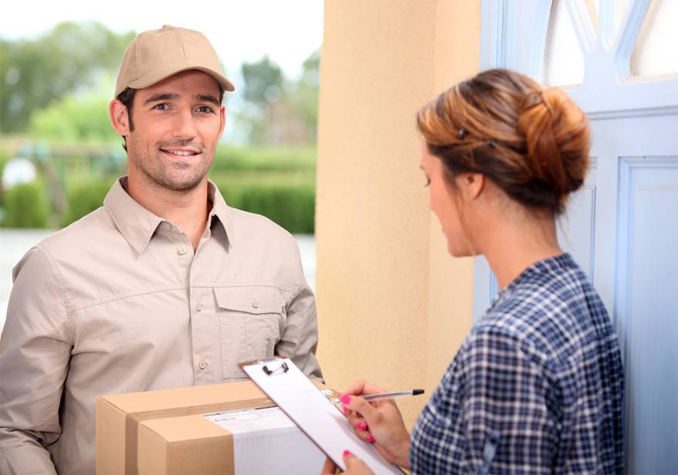The city of London has a big, four-wheeled exertion but doesn’t suit the situation, cycle cargo is the answer
Each weekday more than 15 thousand cargo delivery vans make their way into a crucial city of London but I am telling you the quarter of the exact numbers because London was not a small city ever.
While they developed all of the primary exertions needed to hold the town buzzing, additionally they gobble up priceless street house – circling around the equal streets watching for a park and stuffing their massive behinds in London’s otherwise postcard capable roads. All these things making London a universal city.
Why Delivery Vans are in Danger?
The Door to door delivery automobiles from all the major cargo carriers and parcels delivery handlers like DHL, FedEx and the Royal Mail, make up almost 20 percent of automobiles and vehicles venturing into the significant city in the UK. It is not only happening in the UK and the city of London but across the globe, door to door delivery has the same dilemma. For instance, we take a look at the city of Melbourne on the east end of the globe, there is not a big difference in the stats. It doesn’t matter how small the city is if we compare it to the city of London.
Melbourne local government is also concerned about these issues and they said that every day there are around 10,000 cargo and delivery vehicles who head towards the city and they are almost 25 of the total traffic in the Melbourne city. The mayor of the city says that it is simply big congestion, Melbourne lord mayor Robert Doyle is very concerned about the situation and hopping that there will be an easy way in the future to overcome this problem.
What are the challenges in the Door to Door cargo?
If we talk about the city of London, the cargo business has a number of challenges from traffic increase, delays and number congestion tax issues but the biggest and universal challenge is people itself. The customers or the clients, because they are getting smarter with every passing day and demands for smarter options are also rapidly increasing.
So, when people urgently demanding a swift but smart option, then problem arises as developing numbers of humans demand more room to move and fundamental new transport disruptions, such because the royal mail and the DHL are trying to offer smarter options in the UK, however in the case of Australia, Melbourne Metro Rail mission, running like the loom on the horizon.
So what are the answers?
London has started the campaign against the polluted traffic in the city and they are observing the year as an air pollution cleaning year and the new mayor of London Lord Sadiq khan has won elections on this campaign only. It doesn’t mean that they are only about to swipe the delivery and cargo vans but they are looking overall picture and introducing the NoX tax.
Australia is also learning a lesson from the UK and the lord mayor stated the council would more and more discourage giant cars from coming into the city, specifically when they are unplanned and everywhere the place.
Who will get the sticks?
This could involve bigger distribution centres on the outskirts of the city, where the freight is damaged up and then taken to its vacation spot using smaller autos reminiscent of “cargo bikes”. Anyways, these autos or cargo bikes are the future of the door to door cargo across the globe. In Asia, countries like Pakistan and India already using the very small number of vehicle and more door to door cargo delivered through cargo bikes.
The motorised or pedal-driven autos are already being utilized by some food delivery corporations and there is a small however burgeoning enterprise in bicycle cargo delivery, where parcels and merchandise make the ultimate leg of their trip on two wheels.
Pioneers in Bike based delivery
Blane Muntz owns Cargone Couriers, a bicycling courier service that operates 4 cargo bikes from near the Queen Victoria Market. It is usual punters comprise Butter being Cookie Sandwiches – for whom they make 10 to 30 deliveries three days a week, to cafes throughout the city. Mr Muntz stated the uptake of cargo bikes had been slow.
“Unfortunately, Australia’s transport enterprise is 10 years in the back of what’s taking place in European nations,” he stated. That stated he is optimistic (cargo bikes) will become the reality since the congestion is actually getting worse.
One other tactic presently being investigated by way of the city of Melbourne, Victorian government and VicRoads is scheduling “out of hours” deliveries – for example, organising deliveries in the dead of night or 2am, as an alternative of for the period of the morning commuter rush. They are using that time as the very quiet hours on the roads and it helps them to get deep into the city which almost impossible in the day hours.
However, this initiative has no longer necessarily laboured in other areas, as a result of the additional price of having employees on premises to greet the deliveries.
What Government is about to do?
Doyle envisaged that sooner or later, underground auto parks would be repurposed into significant distribution centres. A significant vehicle may just arrive in a non-residential discipline late at night or in the very early morning. And then the weight is broken down within the early hours of the morning and delivered before alternate begins according to him. He further added that the disruption to the town is absolutely minimal. The roads are empty, the footpaths are empty and that’s when deliveries are made.
Drones also have a chance
Meanwhile, council’s transport chair Cathy Oke mentioned drones and robots had additionally come up in discussions about future freight options in Melbourne, as had public transport. Swanston road is one of the biggest interchanges of the world and why wouldn’t you recollect possibly having freight on the back of the tram. Probably the most tram routes are particularly lengthy, she mentioned. She spoke in the favour of the trams but cycle couriers are the next big thing.













